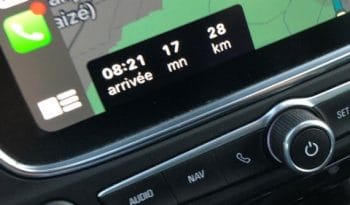Let’s talk about time buffer.
A few days ago I had an appointment with a client for an important meeting at 9am, in a provincial city with heavy traffic.
The journey in normal time should take 20mn, I decide to leave at 8am.
A question that often comes up in training: how much should the time buffer be? Answer: it depends…
The meeting was really important and my knowledge of this city was limited. I opted for a 40mn buffer for a 20mn travel time.
As I hit the road Waze proudly announced that I would arrive at 8:21am. That’s cool, it will allow me to discuss with some key people before the meeting. A little later the arrival is scheduled at 8:38, then 8:29, then 8:33, then…
I finally arrive at 8:48! Just enough time to go through the reception and accept a welcome coffee… Demonstrating in passing my mastery of “roughly right” time buffer sizing.
Let’s see. I used a connected digital tool equipped with the best technology. Sophisticated Google algorithms calculated my arrival time at 8:21 am very precisely. How could I have fooled myself so much?
Note, if the announced arrival time had been 8:21:34 – um, I might have been wary.
Too precise to be true. Precisely wrong.
If Waze had been honest with me, the announced arrival time should have been “between 8:30 and 8:50”. Would I have been satisfied with this answer? Probably not, since we are so used to working with a single number. And let’s face it, we are not comfortable with uncertainty and ambiguity.
By the way, Waze is neither honest nor dishonest – let’s stop personifying our digital assistants – Waze applies calculation rules, and its main benefit is to show me the direction to take, as traffic conditions change. How to adapt my route is what matters, but my arrival time at my destination will change.
What efforts have been made in our companies to establish a consensus on THE sales plan that will fuel our S&OP!
So much pressure on the sales, marketing, and supply chain teams to improve the reliability of forecasts (respecting the 8:21 deadline).
The truth is that we don’t know what the future will be like, we can only assess assumptions, optimistic/pessimistic ranges, test that it is compatible with our operational skills, and make sure that at each crossroads we take the best direction possible with our visibility at the time. Isn’t that what S&OP is all about, to orchestrate the adaptation of the company?

The same logic applies to the planning of our workshops. So much effort and technology in some companies to generate the ideal production program, scheduling optimized by the best 4.0 algorithms!
Spoiler alert: the ideal plan does not exist, because Murphy’s Law will strike! What matters is to announce to your customers a delivery date compatible with your means and protected from hazards, and that at any time your teams have the right visibility on the priorities to facilitate the flow and meet the commitments. Take the right direction at each crossroads to arrive at 8:50 am at the latest. This is what the Demand-Driven Operating Model (DDOM) allows through its time, capacity, and stock buffers, and its control points.
How to put this into practice? Join us for the next Adaptive S&OP and Demand Driven Leader training sessions!

